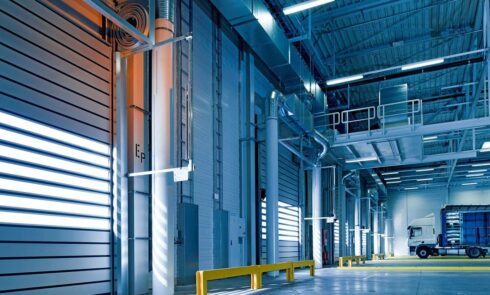In the early stages of technology adoption, construction companies can experience a wide range of AI (Artificial Intelligence) benefits: reducing project costs, improving productivity, organizing on-time completion and delivery, remote job monitoring, rapid problem solving, and improving safety and compliance for employees. Application options for AI in construction are increasingly gaining popularity, from geotechnical soil analysis to disposable sensors and algorithms to more accurately determine concrete curing times.
Optimization
The use of IoT sensors for remote monitoring of equipment status, coupled with the ability to analyze the movement and operation of construction machines, significantly reduces equipment downtime, thereby minimizing machine maintenance costs and optimizing work productivity. Implementation of artificial intelligence technologies, which implies improvement of algorithms by trial and error method based on the analysis of past projects, will allow to select the most optimal variant of work planning, which in turn will also self-improve over time. In addition, this analysis will allow you to model the results of the delivery of objects, as well as to predict the distribution of materials to construction sites.
Predictive analysis
At the project development stage, computer programs can be trusted to calculate the probability of risks, the possibility of complying with technological norms, and to simulate the reliability of certain methods during construction. Quality software will speed up the decision-making process on a project and potentially save time and money on troubleshooting potential problems. In addition, these types of analytics platforms will help speed up the testing of materials used, reducing downtime on projects. The information for analytics is collected through sensors installed on the equipment, processed, and output for both real-time monitoring and work planning in the next phases.
Improved efficiency and increased productivity
Technologies such as IoT and AI are enhancing the analytical data processing by providing complete information about the equipment in use and its resource consumption. Continuous monitoring of fuel, electricity, water consumed plays a major role in optimizing costs at every stage of a facility’s construction. In turn, this entails increased productivity and, as a result, increased profits.
Caring for the environment and minimizing noise pollution
Construction processes have a significant impact on pollution, and Internet of Things and artificial intelligence technologies provide an opportunity to implement mechanisms to reduce emissions, construction debris and the noise generated. For example, the use of electrical equipment reduces noise and carbon dioxide emissions.
Enhanced workplace safety measures and compliance with labor standards
The automation of construction processes, such as in modular buildings, allows much of the work to be done off-site, reducing labor requirements and minimizing health risks to construction workers. IP cameras, drone footage, 3D modeling – there are various ways to collect information that forms the basis of AI analysis to assess potential hazards to human safety. Project managers can also use this data to develop and approve facility designs or develop more accurate algorithms to calculate hazardous scenarios during construction. Image recognition and classification will serve as a reliable source of safety training for new hires, as well as material for continuing education courses for construction workers. The information gathered from on-site sensors and run through analytics platforms will undoubtedly contribute to improving safety measures and compliance with work standards.
Managing complex systems
Work processes are becoming more complex and more numerous over time, so project managers are increasingly turning to IoT technologies for control. Based on the data from sensors and analytical processing, it is possible to implement an individual approach to each project, as well as to develop innovative methods of work. With machines, operators, drones connected via IoT technology, and information stored in the cloud for further analysis, each construction project becomes a platform for developing new products, services and solutions for the construction industry.
Attractiveness of the industry to the younger generation
The construction sector needs professional staff. It is difficult to attract young professionals when the industry is perceived as dusty, dangerous and boring. The introduction of digital technologies such as AI will help attract the younger generation who can no longer imagine their personal and professional lives without technological innovation.


